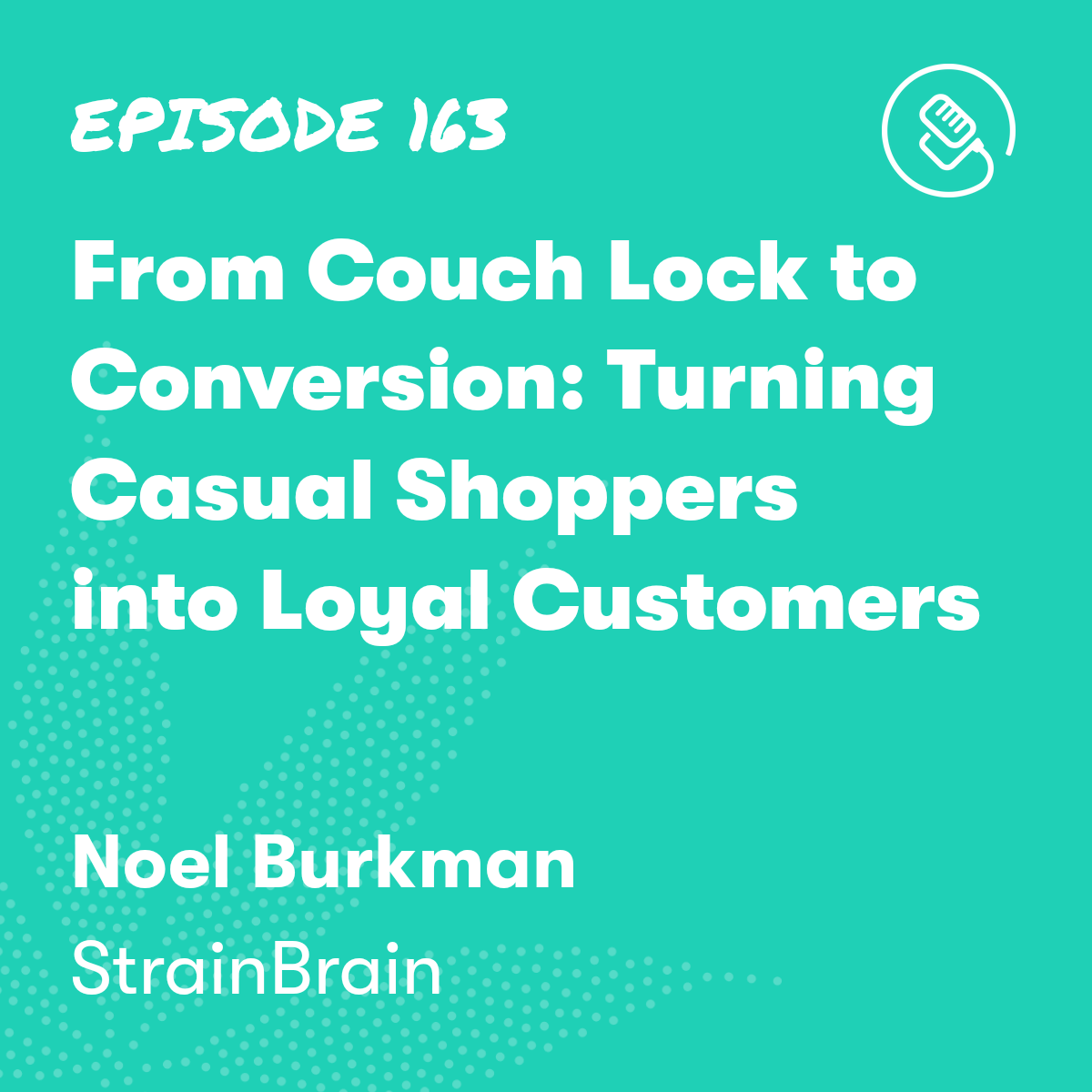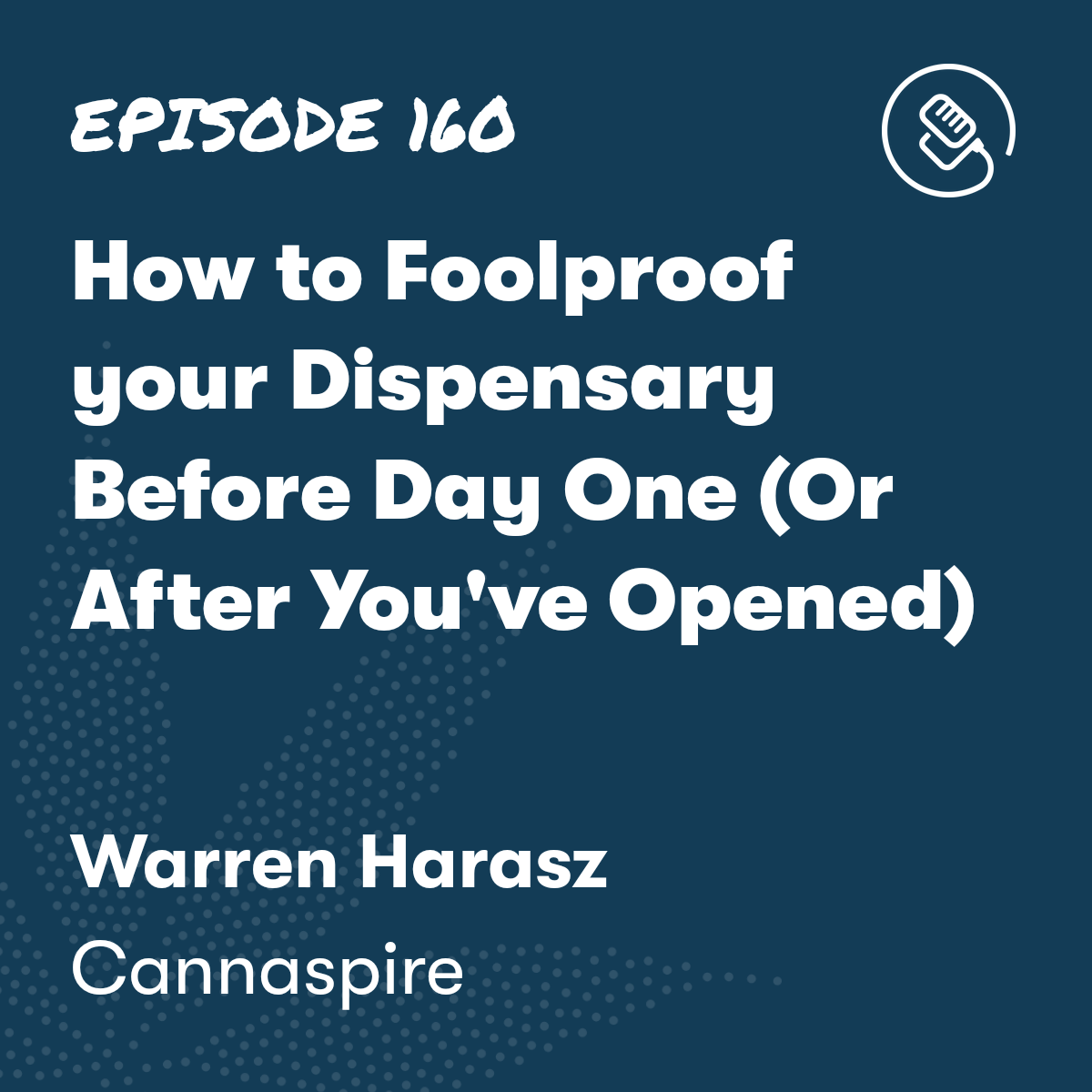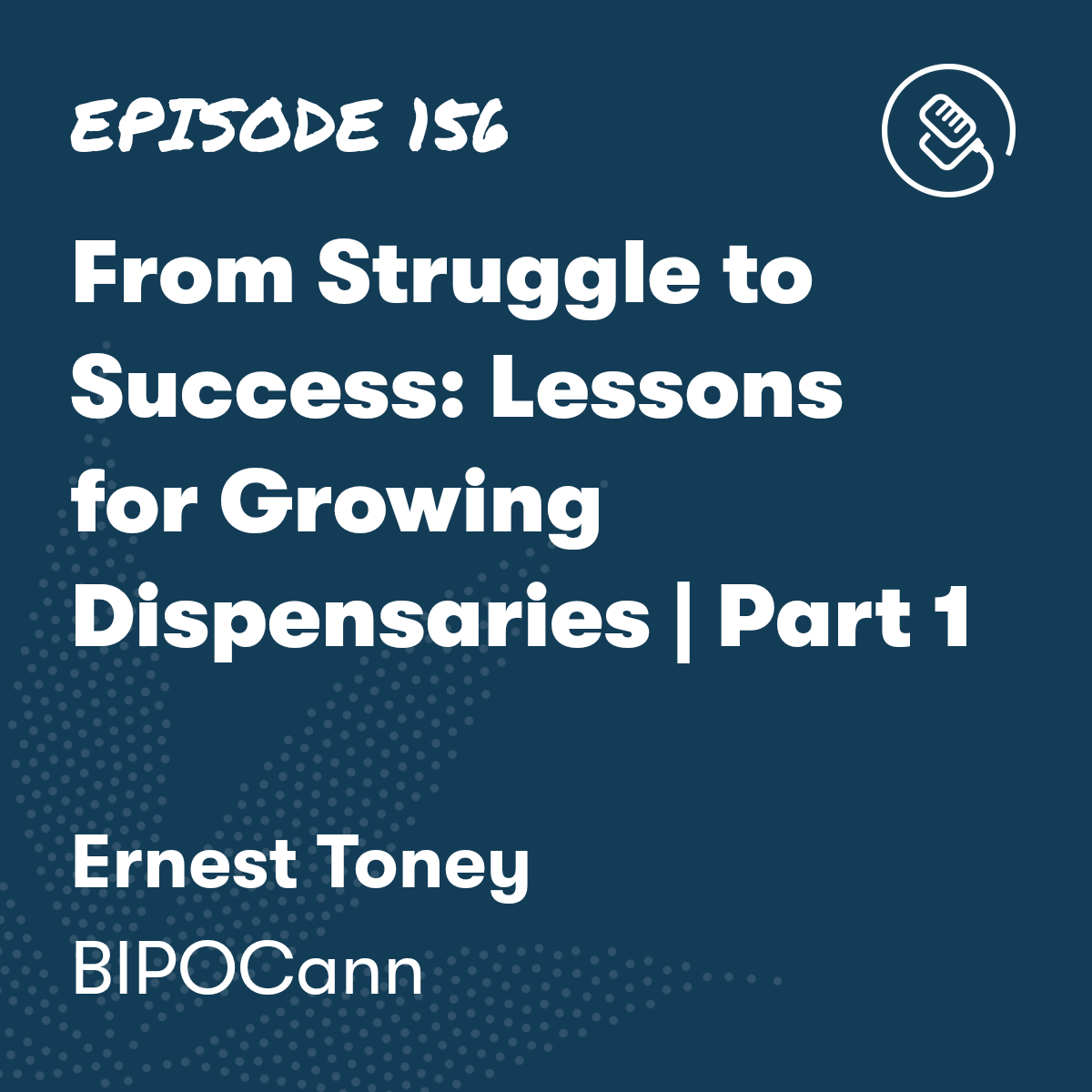

Efficient Inventory Management: Secrets for Cannabis Success
Episode Description

Episode Transcript
Tommy: There are so many regulations and controls required around inventory. What are the best practices for receiving. What are the best practices for accounts, how to prepare yourself for a regulatory audit. Aly from Budding Operations joins us today to talk a couple, everything around inventory controls.
Aly has worked in the industry for over 12 years. Helping dispensary's with their inventory operations. If you have questions on your back of house, this episode's for you.
Intro: Welcome to the KayaCast, the podcast for cannabis businesses looking to launch, grow, and scale their operations.
Tommy: Aly, thank you so much for joining us today.
Aly: Yes, thank you for having me.
Tommy: We get this question asked a lot. How can somebody, or what is the thought process that an owner should have when assessing staff capacity and adequacy?
Aly: Yeah. So, you know, I think that has a lot to do with unique operations, right? It's going to be the size of your operation, not only in volume of sales, but even possibly the physical size of your dispensary. And another thing to really consider there is what is your retail format? Are you doing a fulfillment model where there's really no product on the sales floor and somebody in the back of house is filling orders?
Or are you doing deli style where all the sales are coming from, the products coming from directly behind the sales counter? Um, so for example, under the fulfillment model. You're going to need to staff that back of house every day, all operating hours. Where if you have more of a deli style model, you might not have your inventory team chained to the inventory room, um, but you still are going to need inventory support.
So I think That really has a lot to do with a lot of factors, but I see a lot that people understaff their operations. And then there's always that stress that we're putting on our employees that maybe doesn't make such a great work environment.
Tommy: In the ideal makeup of the backend team. You have your manager and then who else do you have?
Aly: So we're definitely going to need support roles under that, right? Most stores are open anywhere from 70 to 100 hours a week. So you You can't work all of those hours as an employee. So usually I see an inventory manager working the classic nine to five, uh, being there when orders come in before the store opens, um, able to work with the night shift team, um, and have a nice transition, but they're going to need staff under them that understand their role and can do their job when the manager is not present.
Um, so in most cases, if you're open a hundred hours a week, you're looking at Somewhere between two to four designated inventory people.
Tommy: You mentioned that the inventory manager, it's, they're overseeing four, two to four people. They're also responsible for the back end SOPs. If you were hiring somebody, are you looking for somebody with experience or can this person learn? On the job.
Aly: So I think with where the cannabis industry is at, there's definitely a lot of people out there with experience, um, that you could fit into this role, specific cannabis experience. But I also think there's a few other industries that provide good experience that the skills, into cannabis. For example, people who work at gas stations have very, very strict control over tobacco products, right?
So somebody from a gas station would be a great candidate for an inventory role in cannabis because they're already following a different set of compliance laws that has to do with batch tracking. So I don't think it's required to have cannabis industry experience. And especially because, uh, the pay rates in cannabis can be a little low.
You might not find somebody who's willing to move a job that they already are working at. Um, or also relocate to a new state. So I think keeping an open mind about what those skill sets are and how they can be represented in other industries is important when you're hiring for this role as well.
Tommy: Well, I've, let's talk about that. What other industries have you seen work well for cannabis?
Aly: Yeah, um, the first thing that comes to mind is anything that's heavily regulated. Now, cannabis is The most heavily regulated in most cases, um, but looking at anything that has to do with nicotine or tobacco tracking. And then also a lot of people I see come from the casino world, right? Um, you have to get background checks.
There's lots of checks and balances. If you work at a casino, um, everything's also on camera. So I think if you're coming from any regulated market, at least the culture of compliance comes with you as an employee.
Tommy: I want to stick with adequate staffing. If an inventory manager is creating a schedule for the week. What is the thought process in ensuring that we have adequate staff, comparable to sales level?
Aly: Right, so again, we have to separate that deli style versus fulfillment model.
Tommy: real fulfillment
Aly: Yeah, let's
Tommy: if you're doing Deli Style, don't.
Aly: yeah Good point. Good point. It's a the best way to lose inventory So yeah, we'll stick to a fulfillment model for the point of this conversation But if you have a fulfillment model You are going to need somebody in that back room at all times and at least one person right and then on You Days where it's busy, which most point of sales give you really adequate reports now about, um, you know, increased sales times and things like that.
You're going to want maybe two or three people back there, right? If there's five point of sales stations and they're all filled up with a customer, you have five orders to fill, right? And leaving that on one person, Not only can lead to mistakes because they're rushing, uh, but can also lead to long wait times.
And you're really trying to get customers in and out as fast as possible based on their need, um, so you can serve more customers.
Tommy: Is there a metric that business owners should use in comparing labor to sales on the backend?
Aly: Yeah. So you definitely want to make sure that both of those things are looked at together, right? So for example, on a Monday morning, I often see that a manager might take a split sales role because frequency of sales is really, random, right? You have one busy Monday, but the rest of them, you only see five people before noon.
I think it's important to also look at your hours of operation when you're looking at the number of sales, your labor cost, and if you even need to be open, all the hours that you have listed on your website or whatever you intend to be open. And I think another big thing to look at is average ticket size.
Uh, if you are, if you have large ticket sizes, people spending a lot of money. Uh, at one time, then that's less people that you're seeing, but there's still a, a volume of inventory involved. But if you have low ticket, average ticket sizes, but it's over a lot of people, then you have more people to deal with, but less inventory, right?
So I think it's a balance of customer service and keeping your labor number, something reasonable and supporting your staff at the same time.
Tommy: Is there a benchmark that entrepreneurs should shoot for?
Aly: I don't think there's anything, uh, let's say permanent or advertised there. I first like to look at customer to salesperson ratio. You know, you could, you should never really have more than two customers on the sales floor to every employee you have out there. And to every sales person, let's say.
to two point of sales open, you're going to want at least one support person in the back. So I think there's two different ratios to look out there.
Tommy: Let's talk about receiving inventory. What does proper receiving inventory look like?
Aly: Yeah, I, I see this ball dropped a lot. Um, it's definitely in almost every state, it's required that you verify inventory upon receiving it. But often I see that step being skipped because people don't have time, right? Or the delivery driver or the originating entity doesn't want to stay around to wait for you to verify the inventory.
But once you take inventory into your system, into your seed to sale system, it becomes your responsibility. So if you accept a pound of cannabis, but it only weighs 400 grams, Well, what are you going to do with the other 52 grams in your seed to sale metric biotrack system, right? So taking the time to verify that you're getting compliant product is extremely important.
And I also encourage people to reject product that is inaccurate, um, because you're just inheriting. Another licensee's problem there. Um, so making sure that you're verifying is, is very important.
Tommy: Is there a recommendation of how many people should be present when you receive inventory?
Aly: So I recommend two, uh, that doesn't have to be two of your employees, right? The delivery driver is supposed to stick around. Um, they can help you verify, right? Or they can even just be visibly observing you verifying the order. And to clarify, verifying means weighing bulk product and counting units, whether it's flower, concentrates, edibles.
Um, so I say a minimum of two, but if you're getting a massive order, uh, in order to save time, and most of the time, you know, when orders are coming, I would pull in at least a third person to speed up that verification process. It could take a long time to count individual units.
Tommy: Is there any best practices on controlling theft? When does theft usually happen?
Aly: So I think, I think theft usually happens, and I'm not saying that employees are steAlyng things. But usually happens if the sales floor has too much inventory available on it, right? You have displays that are out on the table and you turn your back for two seconds and a customer puts it in their purse, right?
But I do think there's some other areas where theft can happen, especially if you don't have a pre planned procedure for inventory control, right? What happens when you receive an order, it's verified, but you don't have time to process it and you're. Point of sale yet. Where does it go? Does it go into the vault where limited employees have access?
Is it just sitting out on the counter with an open box and your employee knows you already counted it? So putting a one pre roll in their pocket doesn't seem that crazy. Um, I would say usually theft when it comes to the employee side are errors, right? Um, I like to think the best of people that people are not putting those things in their pocket.
Um, But I do think it usually comes from either counting errors or sales errors, handing somebody the wrong thing, handing them two pre rolls instead of one. Um, I think that that is the most common theft.
Tommy: In terms of inventory counts, how often should inventory be counted?
Aly: Well, I think there's two answers to that question. Um, most states require a monthly inventory audit. But you are required to reconcile your inventory on a daily basis. So the minimum requirement of reconciliation is to report all of your sales, accept all of your metric or biotrack manifests, and report any adjustments that had to do with waste destruction that might have happened that day, or any adjustments that you're aware of.
Um, But you can do all those things without physically counting, right? And physically counting on a daily basis would really be based on your volume. How much, how many products do you have? How many SKUs do you have? How much are you pushing through the store every day in sales? Um, I say every day would be great, but it's, it's very cumbersome.
You'd need a night crew to do that at all times. Um, so at least monthly. And if you're finding that you have a lot of discrepancies, Um, then you need to be counting more often.
Tommy: What would be your recommendation in a good inventory count protocol?
Aly: So I think it's important to make sure that you're counting by category, okay? You can't look at the full picture of your inventory without counting an entire category. So for example, edibles or concentrates versus vaporizer pens, right? So you have to make sure that you've at least allotted enough time to count an entire category in one sitting.
Um, if you do have any bulk product, I suggest that that's audited on a weekly basis. That's where we see the majority of loss, okay? Um, but inventory protocol, it should be done when you're closed and it shouldn't be done alone, right? It should be done in at least a team of two, um, not only for time management purposes, but It's much easier to lie when you're alone.
Um, and also finally really making sure that it's a blind count, that you're exporting your inventory records from the system and hiding the actual number. It, your brain plays tricks on you when it says 14 and you counted 13, but you think you did 14, you write 14. So I think a blind count is definitely important.
Tommy: Do you recommend the randomness of when things are counted?
Aly: So I definitely think that, you know, you, you somewhat need a schedule for counting. Okay. Because. You need to make sure that you have the proper staff, um, that people know when they're staying after hours or coming in early. But I do think in between monthly audits, um, something called a cycle count is really helpful.
Maybe once a week your inventory manager goes in and picks five random package tags, five random SKUs from your inventory, and assigns that to somebody else to count. And that's doing a few things. could catch random errors in between full inventory counts. It's also keeping your employees in a culture of compliance that you are watching even though it's not the official count day, right?
Um, which would in turn really minimize any ideas of theft.
Tommy: Yeah, no, definitely. Are there any KPIs around inventory that owners should be aware of?
Aly: These things come up in a lot of different industries. Um, just usually, Loss isn't such a big deal. You're running a paperclip factory and you lose a hundred paperclips. You're not really going to know, but since we're in such a regulated industry and everything is tracked with RFID tags and batch numbers, it's really important to avoid loss, not only for compliance, but know what your loss is on a regular basis.
Because you're paying for all of this inventory, right? And in some of these newer states, you're paying a wholesale cost higher A customer pays at a Colorado dispensary, right? So you're paying for all this inventory. And if you're losing more than 1 percent of your inventory a year, depending on how much inventory you have, that can be thousands and thousands and thousands of dollars that you invested, um, that you won't see a return on, and then also looking at your loss percentage and figuring out why that's happening, is it errors?
Is there a possibility of theft going on? If you're not aware of your loss percentage, then you don't really know where that's coming from. And if you don't know where it's coming from, your employees can keep steAlyng from you if they're steAlyng from you. But again, I don't, I don't want to think that anybody is steAlyng anything.
Tommy: What's loss percentage? How do you calculate that?
Aly: So that would be really the difference between the cost of goods sold and the cost that you paid for the inventory. Now this is somewhat difficult to calculate because you might buy inventory in May. That doesn't sell until July. But if you look at it as a, as a whole calendar year and you spent 100, 000 on inventory and you lost a hundred units of inventory at the value of a hundred dollars, the cost value, basically you're, you're, you're basing it off the cost, the unit cost of the products, not so much what you sold it for, but how many units you can't account for that you paid for.
Tommy: Based on your experience, what is acceptable?
Aly: So anytime a client of mine has under 1%, I tell them not to freak out.
Tommy: It's in the, what period is this over?
Aly: Um, we look at most of the time with my clients, we're looking at this on a monthly basis.
Tommy: So 1 percent over, so 1 percent loss over a month.
Aly: Right. Right. And then also the average over the year. is hopefully still under 1%. Um, it's not great. You still see that number of, oh my gosh, that's a thousand dollars worth of product this month that went out the door depending on your sales volume. Um, but mistakes are going to happen, right? The, the way to minimize the mistakes is to do the fulfillment model.
So there's a limited number of people who have access to the inventory. If you have all of your inventory out on the sales floor, anybody could have made that mistake, right? And you're really never going to find out who, unless you watch security footage all day, which is not going to happen, right? So, I tell people not to freak out under 1%.
But there are some states that have actual set limits of percentage that you can lose without it being considered a significant discrepancy. Um, New York, for example, sets that based on the volume of inventory you have in your store. The more volume you have, Uh, the larger percentage loss you can have without having to report that as loss.
Um, but again, compliance aside, if I'm running a business, I don't, I want my loss to be minimal. And I might even incentivize people to keep that number as low as possible, right? Last month we had a 2. 5 percent loss. If we get 2 percent this month, you all get X, Y, and Z, right? Because it's, it's really affects your bottom line in the end.
Tommy: What would your thought process be when in diagnosing where losses are coming from?
Aly: So, most of the time, We see that, we can see that in a few places. Usually we see that when it comes to displays. Right? Somebody's put out a, uh, quarter of flower for a display and at the end and inventory counts, people forget to count the display. Right? Or at the end, somebody sells that out as a penny to the employee because they can't sell it to a consumer anymore.
Right? Um, so some of those losses are planned for, like displays. Um, otherwise I usually see them as errors filling bags. Okay? Somebody orders a pre roll. And a chillum and a hundred milligram edible. And they put two pre rolls in the bag instead of one. So I remember back at my, uh, last dispensary job, we had to verify every order at the point of sale.
You put everything in a basket, you read the receipt back to the consumer and put it in the bag at the same time. And I have to tell you, it took, you know, 10 extra seconds. And we had, Many, far less errors just from doing that, right? A lot of this loss comes from rushing, right? There's more customers. I have to get to them.
Uh, I have a task I'm supposed to do. My boss is calling me to their office. So if we can give our staff the time to slow down and pay attention to what they're doing, um, I think you'd also see a difference in those loss numbers.
Tommy: Yeah. And I would imagine there's, you can also run into discrepancies. You know, customer bought a hundred gram bag, but you gave him 200 grams.
Aly: Yes, absolutely. And that, that would be, that wouldn't be pretty obvious, but you know, you're, you bring up a good point there because if I'm deli styling anything anymore, um, you know, if you're not weighing to 3. 5 or putting into your point of sale, the exact weight that you used, there's going to be weight at the end of that package tag that you can't account for, but it definitely went out into consumer bags.
This could even happen in a, when you're pre packaging, product at a grow to go to a retail store or if you're pre packaging in your fulfillment area, uh, making sure that you're really exact with that over the life of a pound that can add up to numerous grams that you don't know how to account for at the end.
Tommy: Want to go back to inventory counts and I know that regulations, you should count everything once a month. And based on your experience, I'm guessing that you do it based on category. Yeah. And over the course of one month, you would have counted all of your categories. Am I correct on that?
Aly: Yes, absolutely. Um, and I only, let's say you're a small medical store, you might be able to count your entire inventory in one night. Um, but unless you're accounting for, and you're scheduling, and you're labor, for people to be there, Numerous hours after or before operations start, um, then a category is a much more tangible amount of inventory to, to audit.
And it would be difficult to say that there was a missale between categories, right? Um, it's not common that you gave somebody an eighth instead of a edible, right? You're most likely going to have errors within the same category.
Tommy: What are, what other KPIs should owners be aware of when it comes to inventory?
Aly: Yeah. And I think, I think this one, Goes along with loss, but it's, it's almost a subset of loss, right? Um, I think waste is a big one. Waste can happen for a few reasons in a dispensary. Um, number one, your products expire and you don't get them sold fast enough. Um, most of the time a vendor is not going to reimburse you for expired product.
Um, another big one when it comes to waste is vaporizer pens. The fail rate on them, I do not know what it is, but it's quite annoying. How many returns, uh, retailers have to take. Uh, how many times you get a call from a consumer that I bought a disposable pen and it doesn't work. Right, so. Tracking that, your returns on vape pens, is really important because most vendors will reimburse you for those items.
But you still have processes where you have to take that back into your inventory, record it as waste, either destroy it or manifest it back to your, uh, to your vendor. So, but I think that's important too. Because if you have a lot of vape returns from one specific provider, Maybe we're not going to carry them anymore.
Right. Um, and the next biggest form of waste that I see in a dispensary that I think is really important comes to errors, right? Um, either dropping butt on the ground, whether you're packaging in the back or the front, uh, like I mentioned, overweighing something, but not recording it as that weight. Um, and I guess I thought of one more in that process.
Uh, sometimes too, it just has to do with packaging, poor packaging. I see a lot of, uh. A lot of drinks explode all the time. Not only is that a mess, um, but now you have to go to your vendor and see if they'll give you a refund. But if you didn't store them correctly, are they actually going to refund you?
You know, I don't know. So knowing how much you're wasting and the value of that inventory, I believe is really important to working with proper vendors and can be seen differently than loss because waste we can account for, loss we don't know what happened.
Tommy: When owners are tracking waste, do you recommend tracking waste based on the categories that you set forth?
Aly: So you have to track waste by batch or RFID number so that you can report that to your system, but I would also track that by vendor. Okay, maybe not so much on the flower packaging side, but When it comes to mislabeled product, busted packages, vape pens that don't work, exploding drinks, I would definitely track that by vendor as well, because I think it could lead to some supply, uh, determinations.
Tommy: What is acceptable in your view?
Aly: For waste, so if it, if it has to do with quAlyty control from the vendor, You know, there there's, like I mentioned before, there's always going to be errors. Okay. Nobody's perfect. There's nobody out there telling people exactly what to do in the cannabis industry when it comes to compliance. Right. Um, you know, I, I don't really think I can give a real reasonable number, but I guess if I was an inventory manager and if I was recording the same vendor on my waste log every week, I would probably go to somebody and say, Hey, I don't want to carry these guys anymore.
They're creating more work for me. than this other comparable company that sells just the same. So I think it's important for not only your inventory team, but your entire upper management team to be very familiar with inventory statistics. I think they can really drive business decisions.
Tommy: Are there any other KPIs that owners and managers should be aware of?
Aly: Um, let's see, let's think about sell through, for example, right? Um, I purchased product, Tomorrow, August 1st, or I purchased product this month and I still have it in December, okay, and I've marked it down, uh, I've educated, we did a pop up, we've educated our team, and we just can't seem to sell that product.
That is a KPI that you don't really want to spend your money on that product, right? There's a carrying cost to inventory at all times. If it's sitting on your shelf, it's costing you money, right? So there is no appropriate turnover. I think that that's a little bit different by category. Um, for example, tinctures, Topicals, they sell slower than edibles, concentrates, flower, right?
Um, but if you have, if you're counting the same number of topicals every week, week after week, you know, you're not selling through that product and you're just, you're just paying for it every day, right? And the labor associated with it. So I think looking at sell through also is a good KPI for owners, managers to determine if they're carrying the right brands.
Tommy: Or even if your employees are trained enough to, to talk about the brands, it could be
Aly: Absolutely. Absolutely. And a lot of these vendors these days will provide educational materials or if your state allows, uh, have them come in and do pop ups and have deals and things like that, which is all really helpful. But that also goes back to their brand awareness, which isn't really your responsibility as a retail owner.
Um, but you do want to work with brands that provide those things for your employees and your customers.
Tommy: What do you expect as an inventory manager on your flowers? How, what should be the sell through rate on something that is something that you should hold?
Aly: Right, right. So I think, you know, flower is so difficult because there's so many strains, and then there's strains that are renamed as other strains, and maybe it's this strain, so it's hard to, and, and grows aren't consistent, right? Not every grow perpetually grows the same strain all the time. Meaning a customer might come in looking for something that you no longer have at this time.
So I think when it comes to flower, you also have to be mindful that, you know, it's difficult to determine an expiration date on flower. Here in Colorado, there's a use by date now of nine months, but That's arbitrary. I don't really know where the MED got that number from. But I would say that flower expires faster because when it's dried out you don't want to smoke it, right?
So I wouldn't overbuy on flower. I would work with vendors that can replenish you every two to two and a half weeks. Um, I think about two weeks worth of inventory is an appropriate amount to have at your facility. If you have a big vault and a big backup house, Go ahead and have some more. But I haven't been in many dispensaries that have a great storage facilities available.
Um, so I think about two weeks of inventory is, is a good mark for flower. Um, but also you're going to need to know what your sell through rate is to establish a par level and how much you want to order.
So I think there's a lot of different numbers that go into that. Um, and also the consistency of the cultivator, right?
Um, if your customers love a certain cultivator and they just can't keep up with the orders. That makes it really difficult to order the right amount as well.
Tommy: Who should own the training of inventory that they need? That you're bringing in.
Aly: So I think that a good inventory manager would either step into the role where these processes are established. Or be able to create these processes and feel comfortable training everybody else. Um, I'm a firm believer in cross training, even if your back of house is never going to make a sale, they have to know what the front of house is up against up there.
Right. And vice versa, just because you're out there making the sales and you're getting all the big carts and all the glory doesn't mean that you weren't supported by your back of house there. Right. And. Also, for scheduling purposes, it's great to know that you can move people around if you need to. And I think it builds some, uh, camaraderie with the team, so that they don't feel like they're on two different islands, when really You can't make a sale without the back of house and back of house has nothing to do if we're not making sales, you know?
Tommy: Based on your experience, what is a good training? What does a good training program look like? Who's involved? How often does it happen? There's so many SKUs that retailers have and it changes every week.
Aly: Yeah,
Tommy: It's a lot of work to keep up with inventory.
Aly: it is. It really is. And I think, uh, I think the number one thing is revisiting processes and procedures and being flexible enough to change them if you need to. But also leaving them in place long enough to see if they work, right? A lot of times you change something and somebody goes, well, I don't like that.
We're not going to do it anymore. It's like, well, we tried for one day. We're going to need to put a little more effort into trying it. Um, but I think training should be reoccurring. Um, depending on your employee turnover, that could be quarterly, right? If you have a team that's been together for years, having a sit down once a year to review processes and procedures.
Retrain and really have an open forum about how things are going is a great approach as well. Um, when it comes to product training, I would get as much as those vendors are willing to give you. Whether it's uh, paper materials, videos to watch, and make that part of your onboarding training and ongoing training for employees.
Um, a lot of times these vendors are changing product lines or recipes or um, Rolling something new out, it is hard to keep up. Um, but there are some good companies out there, like Learn Brands, I guess that has uh, some platforms for training, but um, I don't know how many brands are on there or how many people have access to that.
So I also think that it's important that training comes from the top down, um, and that everybody's held to the same standard. I see that a lot where Training is somewhat random or not from a management position. And then sometimes people don't take it seriously.
Tommy: So your recommendation really is everybody should be on board and it should be consistent. Speaking of that.
Aly: Absolutely. And training is also seen in the MEDs eyes as a good faith measure, right? We've trained people about not overselling products. We put a limit in our point of sale. We've done almost everything we can, right? So it makes you look good to the MED or any enforcement division as well.
Tommy: State inspection audits. What can people expect going through this?
Aly: Yeah, you know, I think, I think that depends on the state sometimes. Okay. There's some very, very strict states out there, Missouri, Massachusetts, New York, and their, their MAD, uh, is checking on people all the time, even virtually from the back end of, of Metric or soon to be BioTrack, I guess. Um, and then there's some states like Colorado that will look at you based on a complaint.
Based on a desk audit they did. But I definitely don't fear the MED as much as I fear some of these other governing bodies, right? But I think the best thing that you can do is be self auditing yourself, right? Yes, self auditing yourself. Making sure that you have your business records organized, that there's always somebody on staff who can handle an inspection and that person is going to need access to the entire facility and all of your business records and some compliance knowledge.
Um, but I do think that mock audit builds a culture of compliance with your employees that You take compliance seriously and they need to take it seriously. And in most cases, you know, being a badge holder in Colorado, I'm just as responsible for my actions as the license holder is. And that's a lot of information, especially for how the pay rates.
Tommy: So a mock audit, talk a little bit more about that. What happens in a mock audit?
Aly: So, you know, you could always. Pay a compliance speciAlyst to do this for you, but even just making a list of required SOPs, record keeping, daily responsibilities, such as reconciling your inventory, reporting sales, um, and possibly randomly going around to departments to look for those things, or springing a mock audit on where you're going to walk around as the owner during the day and ask to see the most recent waste log and act, ask to see, um, a receipt from a recent customer, or ask to see the employee list in metric, right?
Compliance is, even if you have a designated compliance person, compliance comes up in every aspect of the cannabis industry. So many people are going to be responsible for keeping the wheels on that bus. So, um, I also think that performing a mock audit, uh, asking people to prove that they're doing their job.
Is a good way to show that you are taking your employees seriously, and you also set a standard, and you intend to keep it there.
Tommy: How often should owners do this?
Aly: So, you know what, I would suggest every six months, but definitely after laws change, right? We see a lot of laws changing in November of every year. There's other times with emergency rules and things like that, but after laws change and there needs to be a change to a process, it would be great to audit that new process within 30 days of that changing.
Especially if The owner or the department manager wasn't part of implementing the new procedure. Um, and unfortunately laws changing is, is part of the deal, I guess.
Tommy: Yeah, before you dropped so much knowledge in
this episode, before I let you go, how can our listeners find you?
Aly: Yeah, absolutely. So, uh, our website is www.buddingoperations.com. Um, we're on LinkedIn under myself, Aly Piscatelli, and Budding Operations. Uh, we can be found through any Google search I am. Sure. Uh, and then. Contact information is info at buddingoperations. com. So yeah, if anybody wants to reach out, uh, have a chat or get some more information about what we do and how we can help you, um, we're always here.
Tommy: Thank you so much, Aly.
Aly: Yeah. Thank you so much, Tommy. I appreciate it.
Tommy: Thank you so much for joining us today.
Please hit the like button and subscribe wherever you're listening. It helps the channel a lot. I hope you guys enjoyed this episode. As always until next time, take care.
Outro: Thanks for listening to the KayaCast podcast. We hope you enjoyed the show. Don't forget to subscribe to our podcast and your favorite podcast app, or visit our website to access the full archive of episodes from the show.











